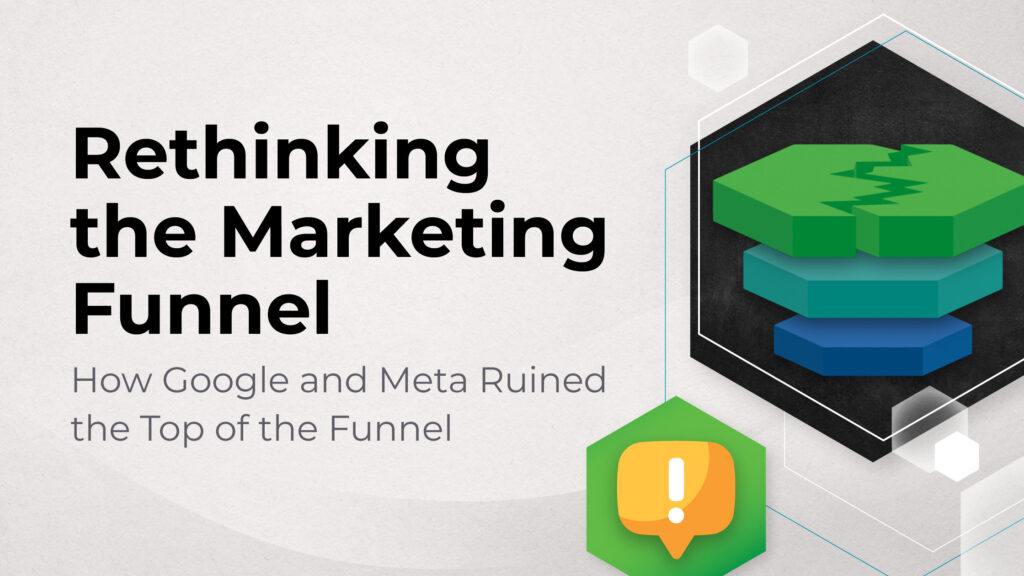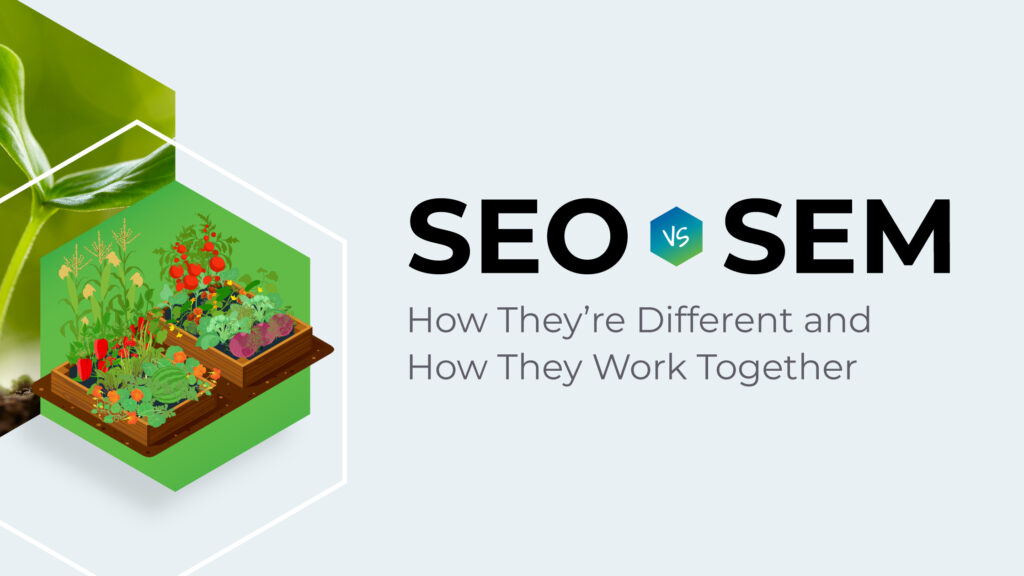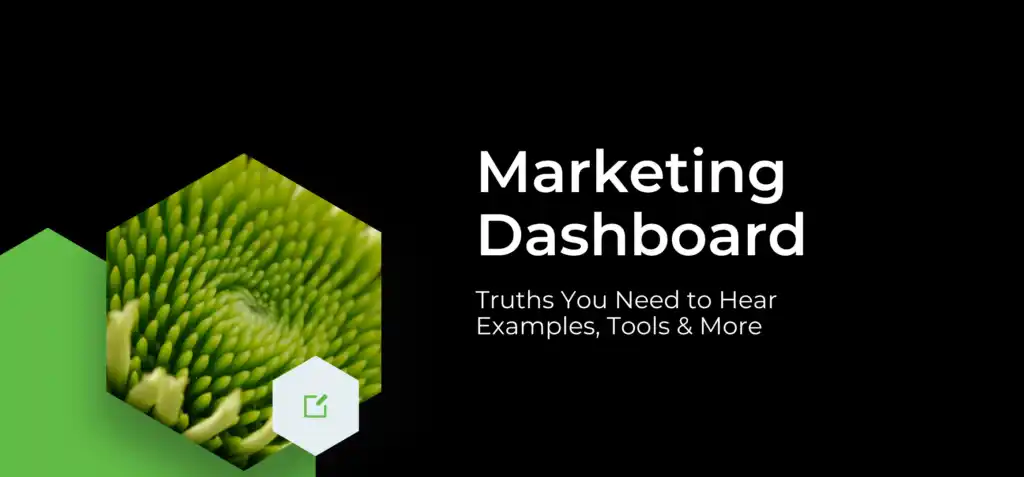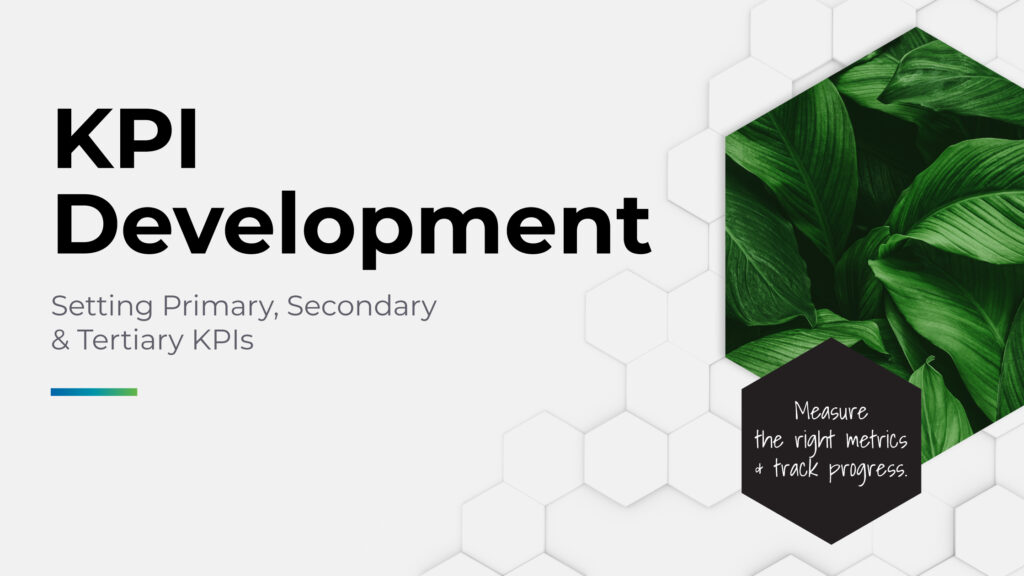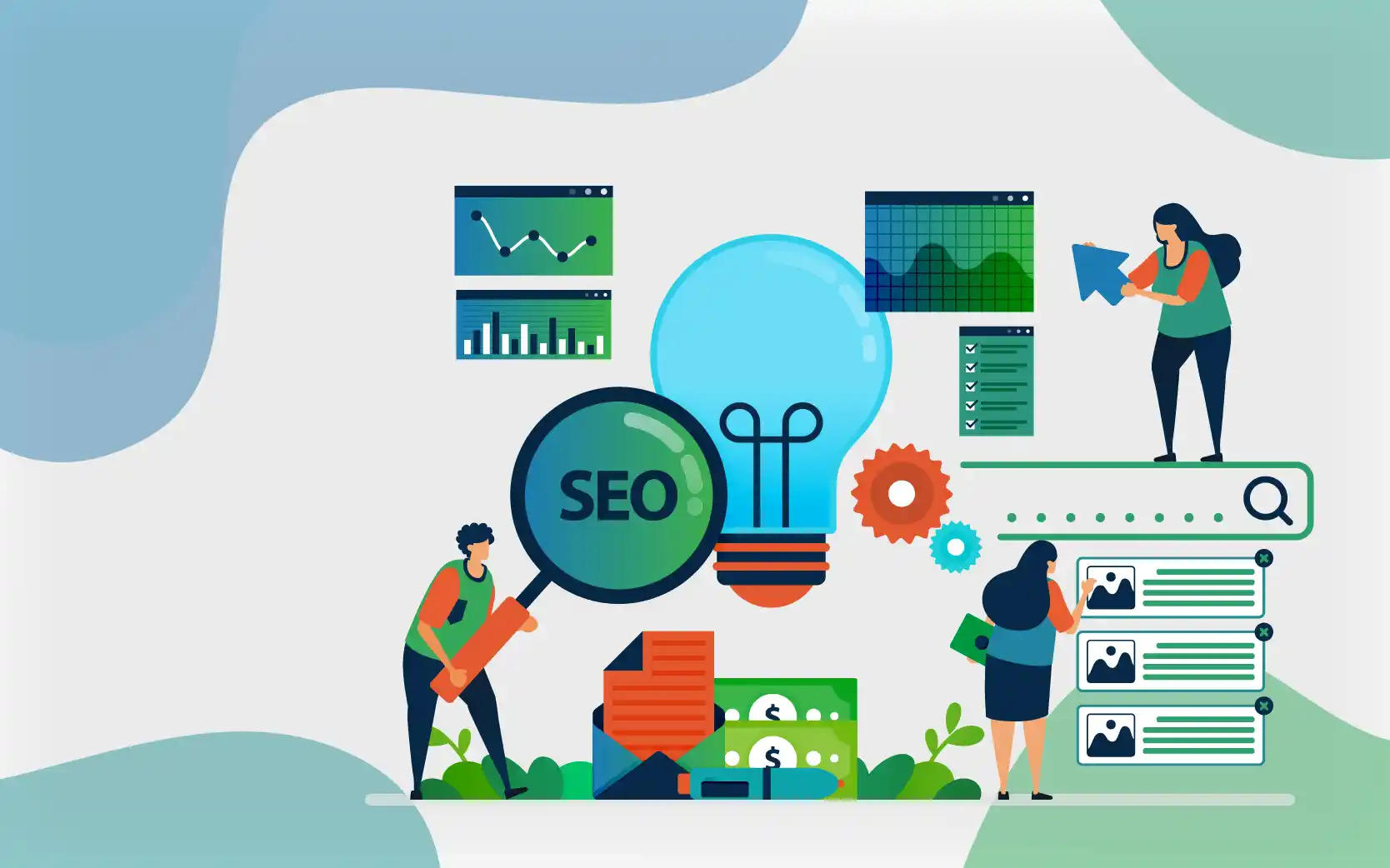
One recurring question we get week after week is how to increase brand awareness on social media.
To answer that question thoroughly, we’ve got to zero in on why linking brand awareness solely with social media (organic or paid) is a major oversight.
Paid search brand awareness needs to be an active participant in any conversation about awareness. Below, we’re covering why.
- Why does brand awareness matter?
- The role of social media in brand awareness
- Social media platforms, grouped according to D2C and B2B
- Best practices for social media advertising for brand awareness
- How paid search supports brand awareness
- Understanding the different types of paid search ads
- Best practices for paid search for brand awareness
What is brand awareness?
“Invisible” is a word you don’t ever want associated with your brand. The opposite of being unseen and unknown is brand awareness.
The term refers to the degree to which your brand is known in your industry and category.
Why is brand awareness important?
In the short term, brand awareness matters because people can’t buy from you if they don’t know you exist.
Awareness is an unavoidable precursor to conversion.
For brands that care about long-term sustainability (should be all of us), brand awareness campaigns are important for two other reasons:
- The most profitable and lasting brands are consistently acquiring net new customers. Upper funnel brand awareness ads provide the foundational first impression of your brand. This is step one of net new customer acquisition.
- The most profitable and lasting brands are fanatical about LTV (lifetime value).
When brand awareness and trust is high, existing customers are more likely to remain loyal to your brand when making future purchasing decisions.

There are three levels of brand awareness:
- Unaided Awareness: Consumers recall a brand’s name without any prompts or cues.
- Aided Awareness: Consumers recognize a brand when given some hints or prompts.
- Top-of-Mind Awareness: The first brand that comes to a consumer’s mind when consumers think about a particular product category.
Importance of social media for brand awareness
Social media plays a vital role in cultivating awareness. This can be achieved using a variety of paid and organic strategies. We’re about to discuss several of the most common options, but it’s important to remember:
Be wary of blanket “rules” for social media engagement. Every brand needs a highly customized digital marketing strategy based on your unique context and goals.
3 reasons your brand should be engaging on social media
1. Audience volume
Despite any personal gripes you might have with the platforms, there’s no denying that social media is a highly active (not to mention ENORMOUS) consumer hub across every imaginable demographic. Wherever your ideal customers/clients are congregating is where your brand should be.
2. Direct contact
In contrast to the amount of distance that exists when a user is perusing your website, social media facilitates a more direct and relaxed interaction. The best social media strategy fosters genuine connections, humanizes the brand, and deepens trust.
3. Shareability
When users come across something they find insightful, entertaining or educational, the platforms encourage sharing, which can extend your brand’s reach significantly.
Different social media platforms to consider
Some social media platforms make less/more sense for your brand, but we could throw a rock and hit a dozen brands who ‘break’ conventional expectations about where a B2B brand should be, or where a D2C brand should be.
While we’ve grouped a few platforms below, based on their potential relevance for B2B vs D2C brands, the right mix for you could be a mashup of several platforms from both columns.
- Your platform decisions should be driven by research and data that confirms where and how your potential customers are spending their time online.
- Each platform has its own personality. A Facebook brand awareness campaign sets a different tone than a LinkedIn brand awareness strategy, for example. Figure out what your brand personality is and which platforms let that personality be best expressed.
D2C (Direct to Consumer) brands often prefer the following platforms:
- Instagram
Great for visually highlighting tangible products, lifestyle, and brand values. Generally, Millennials and younger. - Facebook
Great for narrative-driven product or service updates, promotions, and community building. Generally, Gen X and older. - TikTok
Strong emphasis on music and short-form video. Generally, Gen Z and younger. - Pinterest
Ideal for brands with visually appealing products and DIY-driven customers. - Snapchat
Highly ephemeral content and interactive features. Generally, Gen Z and younger.
B2B (Business to Business) brands often prefer the following platforms:
- LinkedIn
The definite #1 platform for B2B brands. Supports thought leadership and forming impactful business connections. - YouTube
Ideal for showcasing product demonstrations, tutorials, webinars, and in-depth educational content that establishes the brand as an industry expert. - SlideShare
Ideal for sharing slide decks, infographics and other presentations that reflect expertise and thought leadership.
Many brands use platforms from the opposite column.
Customize your selections based on reliable data about your target audience.
Best practices for social media advertising for brand awareness
1. Don’t put all your eggs in a single platform’s basket.
A multichannel marketing approach is the most efficient, but remember that social media platforms are just one channel category. Rather than trying to be everywhere just to say you are, it’s essential to focus on the platforms that best facilitate your brand’s message and priorities.
2. Each channel needs its own dedicated strategy.
The same creative won’t perform equally well on Facebook as it might on LinkedIn. And it certainly won’t work on TikTok. It’s essential to have a channel-specific strategy based on how those audiences will react within the varied contexts of each platform.
Additionally, you need channel-specific strategies for paid vs organic content on each platform. Paid audiences and organic audiences are at different stages of relationship with your brand, and therefore need to experience different content.
3. Channel-specific expertise
Expanding on that channel-specific strategy… It’s tempting to believe the marketing consultant who claims they’re a top notch expert in EVERY social media platform. Wouldn’t that streamline time and budget? There are many unicorns in our Hive of 140+ expert marketing professionals, and none of them claim expertise across every social media platform. Targeted expertise is the best kind.
Our Client Strategists are well versed on the most relevant channels, but an in-the-weeds EXPERT in ALL of them? C’mon…
That’s why we bring singular channel experts to every engagement; people who breathe that platform and are meticulously monitoring functionality and algorithm changes.
4. Optimal impression management
Here’s a gross oversimplification of how marketing drives performance (but where’s the lie??): If you want X revenue, achieving Y impressions will get you there.
This isn’t our hopeful ambition. This is just how the math works.
Plug your last campaign’s numbers into our Marketing ROI Calculator and see for yourself. If you generate enough visibility with your target audience, a certain portion of those eyeballs will convert. Math.
Obsessing about the conversion moment is maybe the biggest mistake brand leaders are making right now.
Obsess about impressions.
Obsess about awareness.
Conversion inevitably follows them.

Importance of paid search for brand awareness
So we’ve established that impressions are the name of the game. Got it.
But most people mistakenly believe that impressions need to come from a single source, when in fact, impressions can come from anywhere – and should. Organic social media awareness. Paid social media awareness. Paid search awareness. Strategic partnerships awareness. All awareness counts.
Paid search, in particular, is generally a sizable component of the brand awareness strategies we create with our client-partners. Here are just four reasons why:
- Paid search produces its own set of impressions, usually more cheaply than paid social advertising.
- Paid search ads appear at the top of search engine results pages (SERPs), which gives your brand prominent visibility for users who are searching for relevant keywords.
- Paid search campaigns provide real-time data on user behavior that supports optimizations within that campaign and across all other marketing efforts.
- When compared to other strategies that require long-game patience, paid search campaigns can generate relevant traffic and actionable insights very quickly.
EXTRA TIP: When awareness is the campaign objective, it can be strategically wise to set your paid search bids so low that you know you won’t win the auction. In this strategy, winning the top SERPs spot is not the goal. The goal is gaining the much cheaper visibility of being seen in searches, even if the user doesn’t click on you at that time. These all count towards total number of impressions.
Understanding the different types of paid search ads
Despite the hoopla when they came out, using Performance Max to run a brand awareness campaign on Google Ads or turning to Advantage+ to run brand awareness ads on Facebook, are not your only options.
In fact, we STRONGLY recommend running your own campaigns instead of locking yourself inside the black boxes of Google and Meta. Check this out:
The list of paid search ad placement options is long, with endless possible customizations. Here are some of the most widely used types of paid search ads:
- Display Ads appear on websites within the Google Display Network or networks they’re affiliated with. Awareness Google ads can include images, videos, and other interactive elements.
- Expanded Text Ads (ETAs) are the conventional search ads that feature headline and description fields, plus your landing page URL.
- Responsive Search Ads test and optimize a variety of headline and description combinations before directing the ad spend remaining in your budget toward the best-performing ad.
- Dynamic Search Ads automatically generate headlines and descriptions based on your website content.
- Brand Keywords. Ideally, you want to spend as little as possible on brand terms. Why pay for a search when that person was already searching for your brand? But you have to bid something to protect yourself from competitors who might see an opportunity to grab some of your branded traffic.
- Video Ads are exactly what they sound like. Although the creative and content requirements may seem prohibitive up front, video views can be a highly effective way of building brand awareness.
- Callout Extensions add extra lines of text to search ads, creating a kind of highlight experience for key features or messaging components.
- Site Link Extensions let you amplify an ad with extra links to different locations on your website, allowing users to jump straight to the content with the greatest interest for them.
- Location Extensions are most relevant for brands with physical locations. These extensions add an address, phone number, and map information alongside your ad.
- Promotion Extensions can help you highlight special offers and incentives
Best practices for paid search advertising for brand awareness
All advertising generally falls under a core set of best practices – paid search advertising is no exception. Here are the top 7 things to consider:
1. Messaging matters.
- Create ad copy that highlights your differentiators – quality, innovation, efficiency, customer service, etc.
- Test different ad messaging to understand what resonates most with the target audience.
2. Strong visuals are non-negotiable.
- If your ad platform allows it, incorporate images or videos that reflect your brand’s identity and evoke an emotional response.
- Visuals should be consistent with your brand personality and all other identity elements.
3. Select keywords based on data and brand alignment.
- Choose keywords that align with your brand AND represent a viable opportunity.
- Include variations of your branded keywords to maintain visibility in branded searches.
4. Segment. Segment. Segment.
- Create ad sets for each segment, based on demographics, interests, or behaviors.
- Modify or replace ad copy and creative to best align with each group’s distinct interests.
5. Prioritize brand consistency across all ads and channels.
We frequently see ads that make it obvious that different teams own lower vs upper funnel ads. This is a big miss.
A cohesive user experience provides consistent messaging and branding in every location. No, it doesn’t matter whether it’s paid search or organic content. ALWAYS be consistent.
6. Your ad is only as great as the landing page it links to.
- The consistency mentioned above extends to the landing page.
- Big red flag: Ads that direct to landing pages on an unoptimized site will be suppressed. Check this out:
7. Marketing is never done. Implement remarketing campaigns.
- Re-engage people who have previously interacted with your brand.
- An ad is NOT futile if it doesn’t immediately translate into conversion. That impression counts, and lubricates the success of the retargeting campaign that follows.
8. Performance should be monitored and optimized DAILY.
- Key metrics like impressions, click-through rate, and conversion rate, should be studied closely, along with the ads and keywords generating the most activity.
- Apply learnings in real-time to maximize the remainder of your campaign.
9. Centralize performance tracking into a single source of truth.
- Even the densest martech stack can and should feed into a single marketing dashboard.
- An analytics dashboard is the best tool for monitoring performance and gathering optimization insights.
10. Confirm your ads are optimized for mobile.
- Reminder: Ad optimization extends to the domain your ads are directing users to.
- Google doesn’t care if most of your traffic comes from desktop. Ads that drive to an unoptimized website will be penalized. No exceptions.
11. Test and iterate forever.
As data-driven marketers, we’re not attached to anything. If the testing data says an adjustment would serve you better, we’re pivoting. Same day.
Conversion is NOT the goal of brand awareness.
This is a hard pill for some marketers to swallow, but we must.
Brand awareness campaigns are not designed to generate an immediate purchase. That’s not their function.
Brand awareness aims to create familiarity, build brand affinity, educate, and nurture trust – essential precursors to conversion.
X revenue requires Y impressions. Brand awareness is what drives the majority of those impressions.
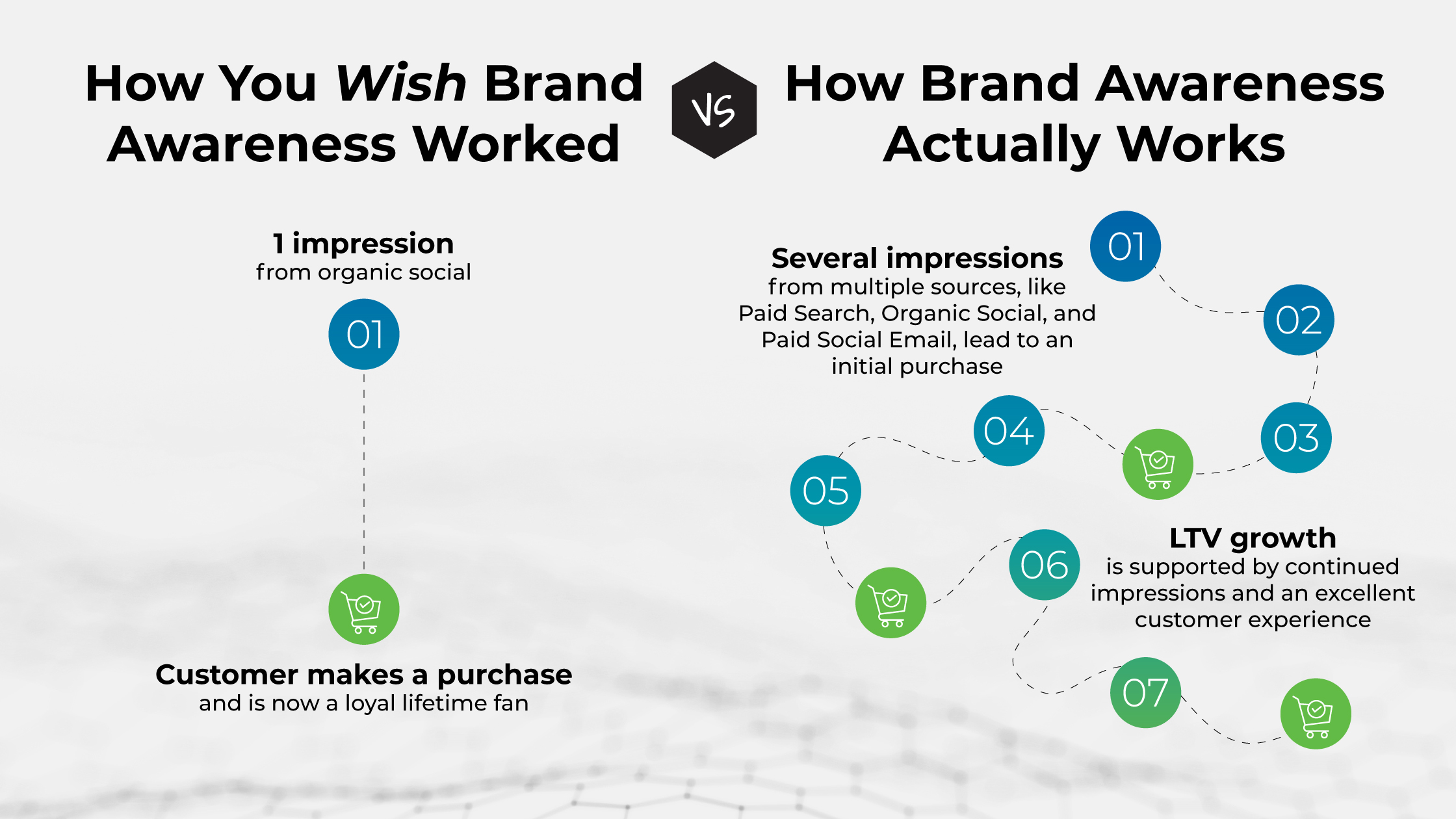
Integrating organic social media and paid search for maximum impact
Remember when we mentioned brand personality above? Think about the deployment of your brand personality in terms of how human friendships evolve.
If you’ve been friends with someone for 6 months, you have a very different relationship with them than the stranger sitting beside you at the coffee shop. As a result, when and how you communicate will vary to reflect each stage of friendship.
Organic social media and paid search offer us that same opportunity.
Advertising for prospects (people who are currently following you on social media) has a different function than paid campaigns. Organic social media audiences are generally ready for the “What can you deliver for me?” discussion. This is more of an outcome-driven experience.
Conversely, paid search audiences are often earlier in the journey and need to understand your brand personality and value proposition first.
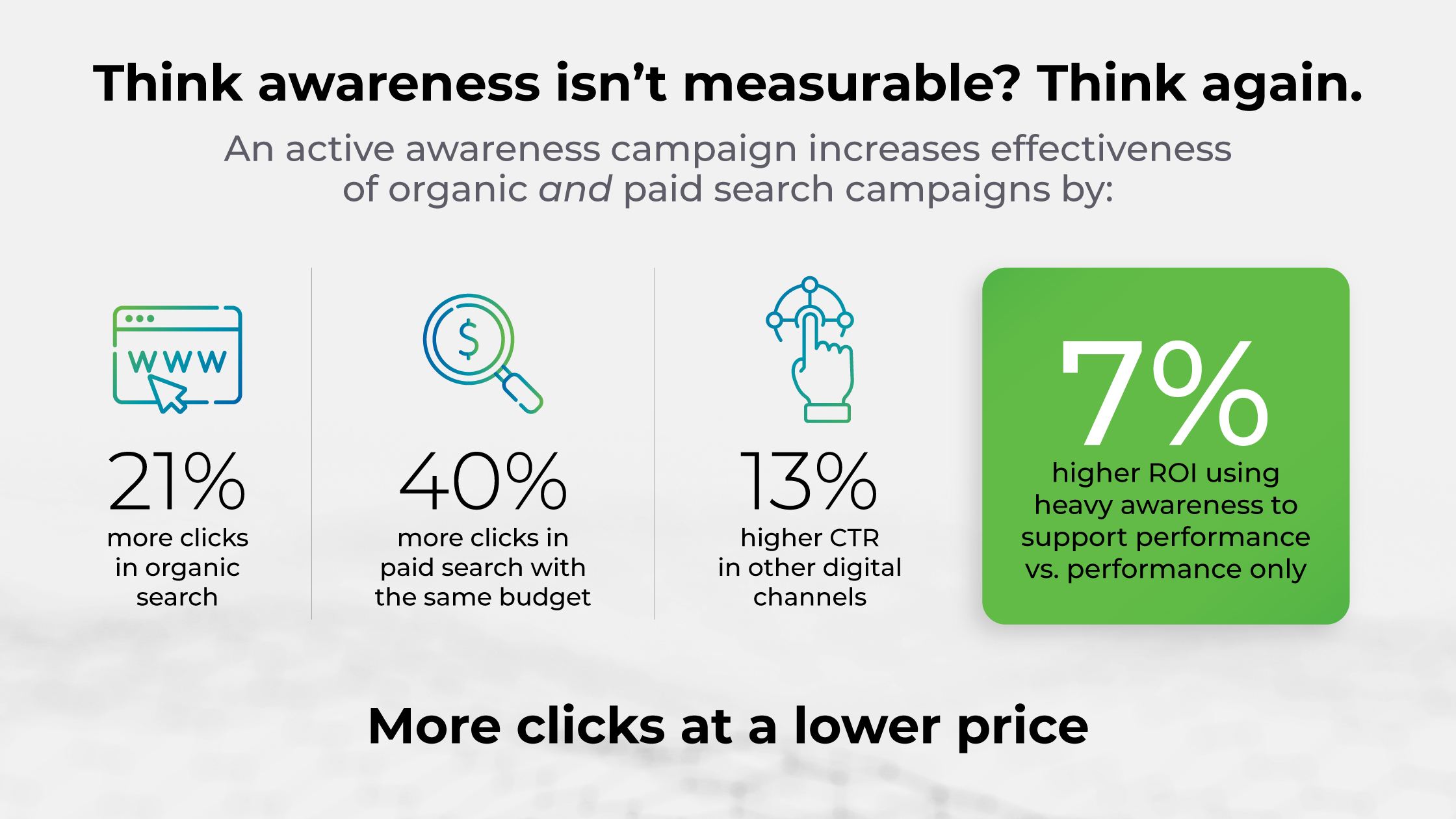
Benefits of an integrated approach
There are 7 significant benefits of an integrated approach to marketing. That and much more lives over in our MultiChannel Marketing Performance Guide. Check it out!
Measuring success
Measuring the impact of a marketing system that integrates paid search and social media hinges on one thing and one thing only: Your marketing dashboard.
All channel data should run into the dashboard so that business decisions can be made with a multi-layered consideration of the many things influencing performance.
Setting goals for brand awareness
When it comes to goal setting for brand awareness, another Apiary Performance Guide is calling your name.
Explore KPI Development 101 to learn how to set primary, secondary and tertiary KPIs to boost brand awareness.
TL;DR on Social Media Awareness
- Marketing performance is inextricably linked to impressions. Brand awareness is focused solely on generating impressions, which is why it’s essential for growth.
- Impressions from brand awareness should ideally come from a variety of sources. Apiary recommends organic (and sometimes paid) social media and paid search as a baseline set of impression sources.
- Despite the widespread assumption that certain social media platforms are better suited for B2B vs D2C brands, your brand personality and market research should determine which platforms your brand engages or not.
- Brand awareness absolutely CAN be measured. Plug your latest numbers into our ROI Calculatorhttps://apiarydigital.com/resources/marketing-roi-calculator/ and see for yourself.

